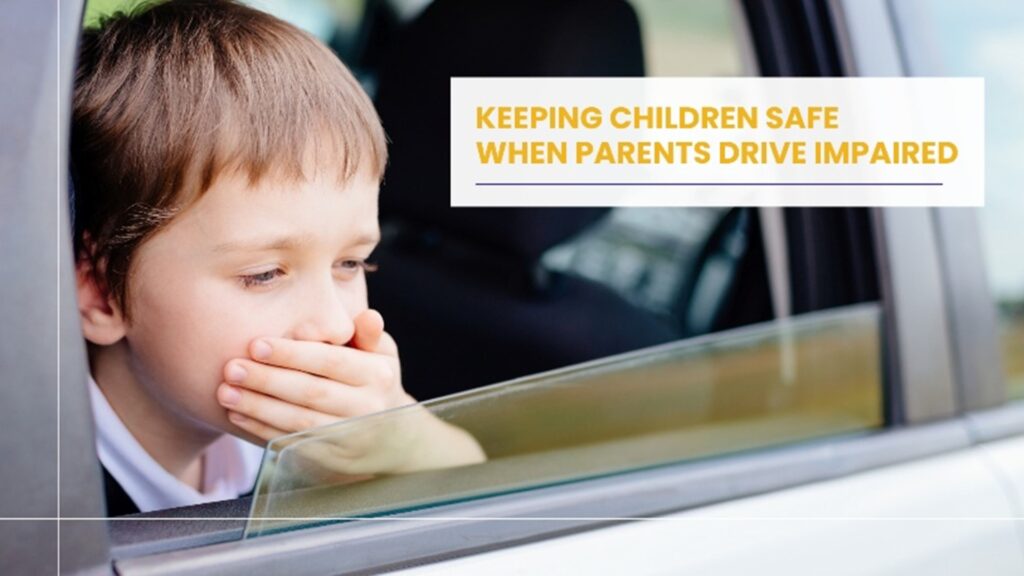Understanding the Issue: How Often Are Children at Risk?
Impaired driving—whether due to alcohol or other drugs—remains a leading and tragically preventable cause of vehicle-related injury and death.
• In 2023, 12,429 people died in alcohol-impaired driving crashes in the U.S.—that’s one person every 42 minutes!
• Among children aged 14 and under killed in motor vehicle crashes in 2023, 25% were victims of drunk-driving crashes, and in 52% of those cases, the child was in the vehicle with the impaired driver
• From 2011 to 2020, nearly 1 in 5 child passengers killed in traffic crashes were in incidents involving an alcohol-impaired driver; in most of those cases, the driver was the same vehicle’s adult passenger
• A retrospective CDC study found that between 2000 and 2009, 2,469 children under age 15 were killed as passengers in drunk-driving crashes.
These statistics from highly credible sources—including SAMHSA, NHTSA, and Safe Kids Worldwide—highlight the urgent need to protect children from impaired drivers, who are all too often those closest to them.
What Adults Can Do: Preventing Harm Before It Happens
If you’re concerned about a parent planning to drive while impaired—especially with children in the vehicle—here are compassionate, proactive steps you can take:
1. Engage with kindness and concern
• Approach the parent gently: “I’m worried about you and your kids. Can I help?”
• Avoid blame; focus on safety.
2. Offer practical alternatives
• Suggest giving them a ride to their destination—drop off the children first, then return for the car.
• Offer for the children to stay with you or another trusted adult temporarily.
• Call or text another family member or friend to assist.
3. Try to delay or deter departure
• Bring up the legal risks: “It’s dangerous and illegal to drive impaired, especially with kids.”
• Compliment or support: “You deserve to make it home safely—not jeopardize anyone.”
4. If they insist on leaving despite your efforts
• Don’t hesitate to call 911. It’s safer to involve law enforcement than risk a child’s life.
• Explain your concerns clearly: “A parent impaired by alcohol/drugs plans to drive with children. Please intervene for safety.”
Guidance for Older Children: You Are Not Alone
If you’re an older child concerned about a parent driving while impaired, you might feel scared or unsure. Here’s what you can do—and you don’t have to do it alone:
1. Find a trusted adult right away
• Talk to relatives, a teacher, coach, or neighbor.
• Ask them to help you figure out a safe plan.
2. Advocate for yourself
• Say: “I don’t feel safe riding with you when you’ve been drinking or using drugs.”
• It’s okay to say no—even to a parent.
3. Call for help if needed
• Dial 911 if you believe your safety or someone else’s is at immediate risk.
• You can also contact a family member or trusted friend to come get you or your siblings.
4. Have a safe retreat in mind.
• Identify a friend’s house or family home where you can go if needed.
5. When in a car with an impaired adult
• Make sure your seatbelt is secure.
• Stay quiet and remain nonconfrontational, the driver needs as much capability as possible to focus on driving.
• Text/tell a caring adult about what is happening and provide confirmation when you arrive safely. Avoid too much texting during the drive however, as this can run the risk of the cellphone being taken away.
• Reiterate the Seven Cs: I can’t cure it. I can help take care of myself by. Communicating my feelings, Making healthy Choices, and Celebrating me. Remind yourself that you can take care of yourself. Focus on things to calm you during such a ride like playing music with headphones/earbuds, playing games, or even repeating the Seven Cs over and over.
Why This Matters to NACoA
At NACoA, we believe children should never be unwitting passengers to danger. Experiencing the parental disease of addiction often brings trauma, confusion, and a feeling that children are responsible or powerless. By providing clear safety guidance and encouraging supportive adult involvement, NACoA helps empower children and families to interrupt cycles of harm—and step into recovery, healing, and safety together.
